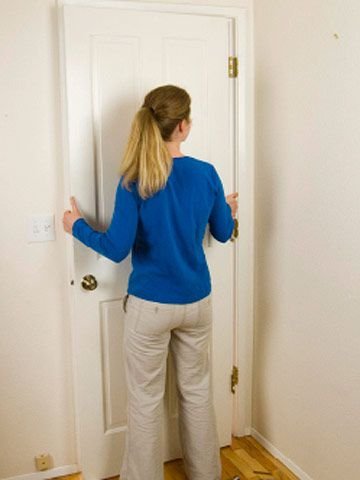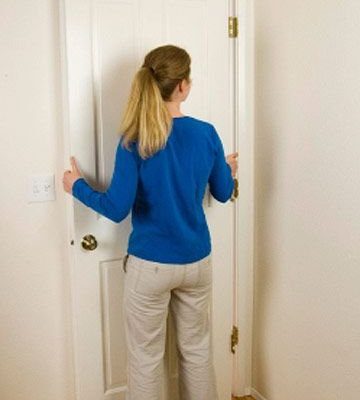
The thing is, exterior doors (whether it’s your Schlage, Kwikset, or a no-name brand) are meant to keep out trouble, but when the lock itself becomes the trouble, it’s more than just annoying. You might notice the key is sticking, the knob isn’t turning, or you have to wiggle everything just right to get it open. If you’re thinking, “There must be a simple fix,” you’re absolutely right—though sometimes it takes a little bit of know-how, a handful of common tools, and a dash of troubleshooting patience.
Why Is My Exterior Door Hard to Unlock From Inside?
Let me explain: Doors are more than just a slab that swings open and closed. Underneath it all, there’s a system at work—a lock, latch, deadbolt, and sometimes a remote or electronic code entry. When unlocking from the inside gets tough, it usually means something in that system isn’t lining up as smoothly as it should.
Here’s the thing about most exterior doors: they go through a lot. Think about it—every time you unlock and lock that door, you’re putting a little bit of wear on the mechanism. Weather, moisture, and just daily use can add up. And unlike interior doors, these locks have to work perfectly every time, rain or shine. If your door is suddenly giving you trouble, it’s rarely out of nowhere. Small issues—like a sticky latch or loose screws—can build up until you’re left wrestling with the handle. Sometimes, it’s even a problem with how the door sits in the frame, especially after a big weather change.
Checking for Obvious Physical Problems
Honestly, before you dive into heavy-duty troubleshooting, start simple. Grab a flashlight and do a quick, careful inspection of your exterior door—pay special attention to the area around the lock, latch, and strike plate (that metal part on the frame).
- Look for debris or buildup: Dirt, dust, or even a stray leaf can jam up the lock or latch. A good cleaning might be all you need.
- Check for loose screws: If the screws holding the lock or handle are wobbly, the whole system can get misaligned, making unlocking a real hassle.
- See if the door sags: Doors can settle or hang crookedly over time. If your door looks a little off-kilter, it might be straining the lock and making it tough to turn from the inside.
For example, I once worked on a classic Craftsman front door that suddenly started sticking on humid days. It turned out the humidity had swelled the wood ever so slightly, which knocked the latch just out of alignment with the strike plate. A quick tightening of the hinges and a little sanding solved the problem.
Take your time on this step. Sometimes, just tightening a screw or cleaning out a handful of gunk can save you hours of frustration.
Understanding How Your Lock Works
You might be wondering, “Why is this such a big deal?” Well, not all locks are built the same. Most exterior doors rely on a deadbolt, a latch, or sometimes both—with brands like Schlage, Kwikset, or Yale mixing things up with their own designs.
- Deadbolts are generally more secure, but if something blocks the bolt’s path, the lock will stick or refuse to turn.
- Spring latches are easier to use but can misalign and stick, especially if the door’s out of square.
- Smart locks or code-entry systems may have extra moving parts, batteries, or remotes that need troubleshooting, especially if the electronic mechanism isn’t syncing up with the manual one.
Let’s say your interior handle won’t turn unless you jiggle it. That usually points to a mechanical problem in the latch mechanism, or maybe an issue with the lock cylinder itself. If it’s a smart lock, a low battery or code error can jam things up, even from the inside.
Understanding what’s under the hood helps you zero in on the real problem—so you don’t end up fixing things that aren’t broken.
Lubricating the Lock and Latch
If everything looks pretty normal, but your exterior door is still hard to unlock from inside, it’s time to add a little lubricant—think of it like oiling a squeaky hinge or a rusty bike chain.
Here’s how to do it right:
- Choose the right lubricant: Skip the WD-40 (it’s more of a cleaner). Instead, use dry graphite powder or a silicone-based spray designed for locks.
- Apply to the keyway and latch: Puff a little graphite into the keyhole and around the latch. Then, work the lock back and forth to spread it around.
- Wipe away excess: Too much lubricant can attract dust, so clean up any drips or spills.
Honestly, it’s surprising how often a sticky lock just needs a little TLC. I once had a neighbor ready to replace her entire door, only to find that a five-second squirt of lubricant made her deadbolt turn like it was brand-new.
Don’t overdo it! A little bit of graphite goes a long way—and using the wrong type of lubricant can actually make things stickier in the long run.
Adjusting Strike Plates and Door Alignment
If you’re still wrestling with your lock, the real culprit might be the door itself—not the lock. Exterior doors can shift over time, especially after weather changes, heavy use, or even a sloppy installation job.
Here’s how to check and fix alignment issues:
- Examine the strike plate: The metal plate on the door frame should line up perfectly with the latch or deadbolt. If it’s too high, low, or off to the side, the lock won’t move smoothly.
- Test the fit: Close your door slowly and watch where the latch hits. If you have to push, pull, or lift the handle to get the lock to turn, you probably need an adjustment.
- Adjust as needed: Loosen the screws on the strike plate, move it slightly, and retighten. If the door itself is sagging, try tightening the hinge screws or shimming the hinges.
Real-life example: My cousin’s back door was nearly impossible to open last winter. A quick tweak to the strike plate—just a couple millimeters over—fixed everything. Sometimes, a tiny adjustment is all it takes to make your lock behave.
Dealing With Key or Lock Cylinder Issues
If unlocking from inside is tough, but the lock works normally from the outside, it might be a sign your lock cylinder is wearing out. Cylinders can get gummed up, corroded, or just plain old after years of use.
Here’s what to watch for:
- Stuck keys: If your key is hard to insert or turn, there could be dirt or minor damage inside the cylinder.
- Loose or spinning cylinder: If the part where your key goes is loose or turns too far, it might need tightening or replacement.
- Lock feels gritty or rough: That’s usually a sign of debris, worn pins, or corrosion inside the lock.
You can try lubricating the cylinder (see above), but if things don’t smooth out, you may need to remove the lock and check for broken parts or deep-clean the cylinder. For most Kwikset or Schlage locks, this is a DIY job with a screwdriver and some patience.
If you’re really stuck, don’t force the key—doing so can break it off in the cylinder and turn a small problem into an expensive one.
Electronic and Smart Lock Troubleshooting
Here’s where things get interesting. If you’re using a smart lock with a remote, keypad, or battery (think Yale, Schlage, or a WiFi-enabled Kwikset), a hard-to-unlock door can be a sign of electronic hiccups.
- Check the batteries: Low or dead batteries can make unlocking sluggish, even from inside.
- Reset or re-sync the lock: Sometimes the internal code needs resetting or the remote needs to be re-paired. Follow your brand’s instructions; there’s usually a tiny “reset” button or a sync process in the app.
- Test manual override: Most smart locks have a physical key backup. Try unlocking with the key to see if the problem is with the electronics or the hardware.
A friend of mine was mystified when her keypad wouldn’t let her out—turns out the batteries were so low that even the manual turn inside was failing. A fresh set of AA’s brought her lock (and her peace of mind) back to life.
When to Call a Locksmith
There are times when troubleshooting just isn’t enough. If you’ve cleaned, lubed, and adjusted everything you can, but your exterior door is still stubbornly hard to unlock from inside, it may be time to bring in a pro.
- The lock is jammed or broken: If nothing turns, or if you hear grinding or snapping sounds, internal parts may be damaged.
- Key breaks off: A locksmith has special tools for extracting broken keys and fixing busted cylinders.
- Electronic lock is unresponsive: If your smart lock won’t reset, sync, or respond to a manual override, pro help is the safest bet.
Honestly, there’s no shame in calling for backup. A locksmith can spot problems the rest of us might miss, and sometimes a stubborn exterior door just needs a more experienced touch.
Preventing Future Lock Issues
Once you’ve got your exterior door working smoothly again, a little bit of preventive care goes a long way. Here’s how to keep things moving:
- Clean and lubricate regularly: A quick wipe and a dash of graphite every few months keeps grime at bay.
- Check alignment seasonally: Changes in weather can nudge your door out of line. Tighten up hinges and strike plates as needed.
- Replace batteries in smart locks: Don’t wait for your lock to go sluggish—put it on your seasonal maintenance list.
It’s like taking care of your bike chain or car tires—a little love today saves a lot of hassle down the road. And if you’re ever unsure, remember: a well-maintained lock should always turn smoothly, with almost no resistance.
Treat your door and lock with respect, and they’ll return the favor—making life a whole lot easier (and safer).
Wrapping it up, if your exterior door is hard to unlock from inside, start with simple checks, work your way through cleaning and adjusting, and don’t be afraid to ask for help if you hit a wall. A smooth-turning lock isn’t just about convenience—it’s about feeling secure and confident every time you come and go.
